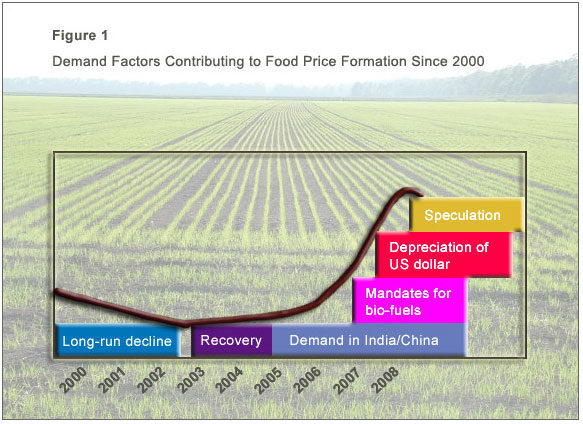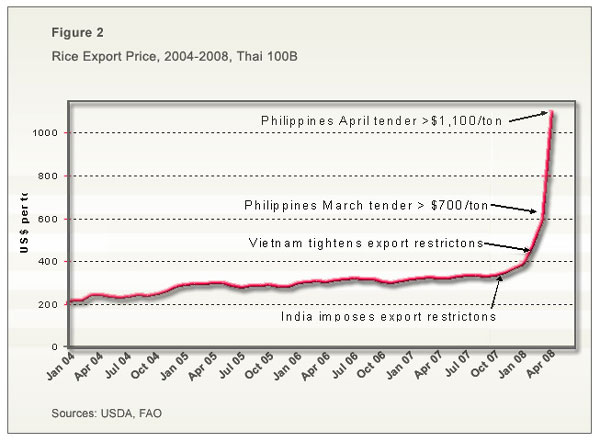The potentially serious consequences of sustained high food prices were recently underlined by Robert Zoellick, president of the World Bank, who suggested that 100 million individuals could be pushed below the poverty line, thus wiping out seven years of gains against poverty.
There is however no agreement as to what explains the dramatic rise in food prices. One thing seems certain though: absent a global understanding between producer and consumer countries, current high prices could last for a long time.
Four basic drivers seem to stimulate rapid growth in demand for food commodities.
Advertisement
First, rising living standards in China, India and other rapidly growing developing countries, which lead to increased demand for livestock products and the feedstuffs to produce them. Second, stimulus from mandates for corn-based ethanol in the United States and the ripple effects beyond the corn economy that are stimulated by inter-commodity linkages. Third, the rapid depreciation of the US dollar against the euro and a number of other important currencies, which drives up prices of commodities priced in US dollars. And finally, massive speculation from new financial players searching for better returns than in stocks or real estate. Underneath all of these demand drivers is the high price of petroleum and other fossil fuels.

Figure 1 shows an impressionistic attribution of the four demand factors causing the recent run-up in food commodity prices. The figure also shows the recent component of the “normal” long-run decline in food prices that has been experienced over the past two centuries or so and a modest recovery from the lows reached in the early part of this century. However, the surge in food prices that has attracted so much attention did not start until 2005 or so, depending on the commodity. Substantial speculative investments in food commodities seem to have started only in mid-2007.
Each of the four demand-driven causes differs slightly for each basic commodity, but the underlying forces are similar. For rice, however, the story is more complicated, as seen in Figure 2. The actual production/consumption balance for rice is favourable. The problem is that a few importing countries, the Philippines in particular, are trying to build up their stocks to protect themselves against shortages going forwards.
Of course, if every country or individual consumer acts the same way, the hoarding causes a panic and shortages, leading to rapidly rising prices. Even US consumers are not immune from this panic.

Advertisement
Such price panics have been fairly common during the past 50 years, but the hope was that deeper markets, more open trading regimes and wealthier consumers that could adjust to price changes had contributed to market stability. This was wishful thinking, as it turns out, as the recent price record for rice shows.
For some food commodities, especially wheat, drought and disease have also led to significant supply shocks. Normally these would cause only modest increases in price, with supplies from stocks and a pattern of year-round production in the northern and southern hemispheres dampening upwards movements. But wheat stocks were at historic lows even before the bad crops rippled around the world in 2007, and the spike in wheat prices has been dramatic. The recovery of Australia’s wheat crop, currently being harvested, has caused a significant decline in wheat prices since early April.
Inter-commodity linkages triggered the current spike in rice prices. In India, as in other parts of the world, drought and disease damaged the 2007 wheat harvest. Thus the national food authority had less wheat for public distribution. Importing as much wheat as in 2006 - more than 7 million metric tons - would be too expensive because of the high prices in world markets. So the food authority announced it needed more rice from domestic production.
Reprinted with permission from YaleGlobal Online - www.yaleglobal.yale.edu - (c) 2008 Yale Center for the Study of Globalization.
Discuss in our Forums
See what other readers are saying about this article!
Click here to read & post comments.
12 posts so far.